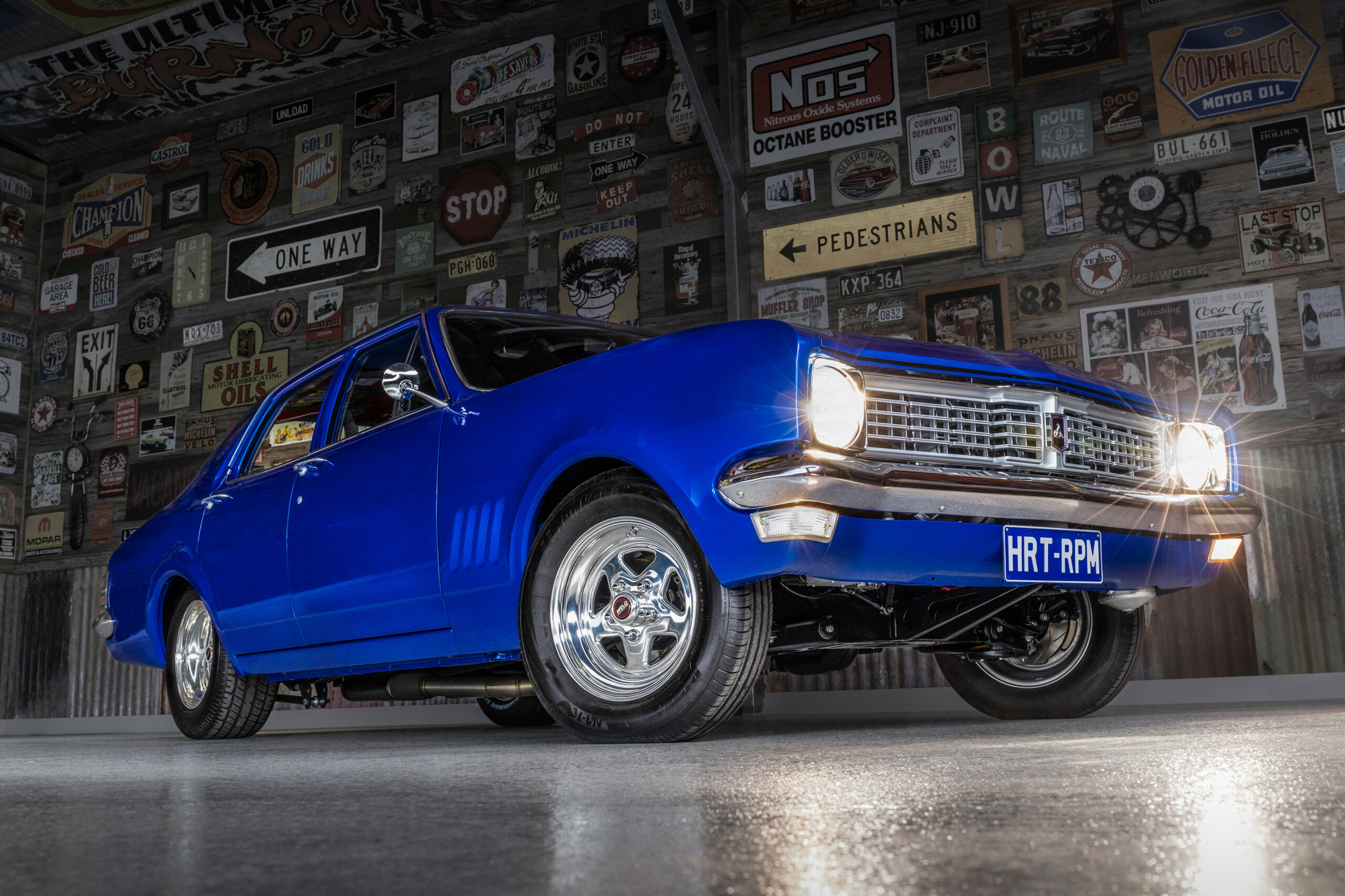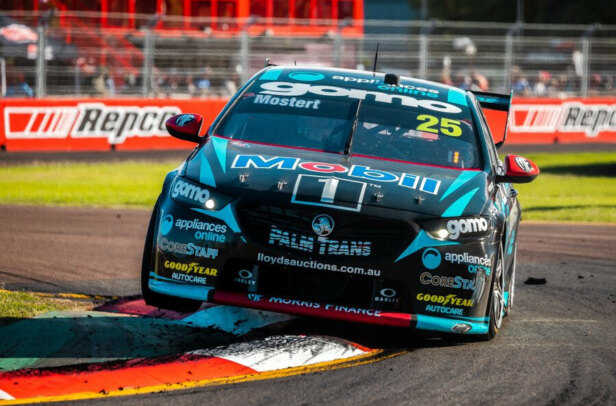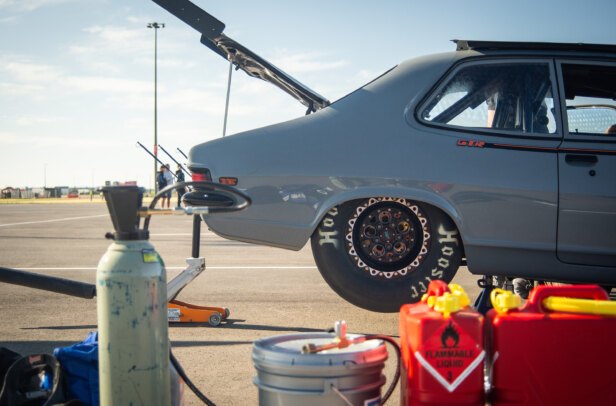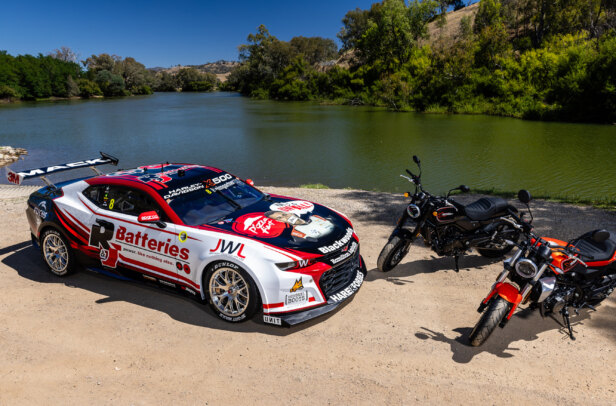When he’s not blotting out the sun with smoke from his screaming blown HQ, two-time Summernats burnout champion Warren Eustace has the enviable role of screwing together Supercars engines. He’s been in the job for 14 years and counting, first under the Holden Racing Team banner and now as part of Walkinshaw Andretti United.
First published in the April 2022 issue of Street Machine
So when he set out to create a capable weekender, there was always going to be a primo engine between the rails. “[Building Supercars engines] has been a huge part of my life, so it made sense,” Warren says. “This engine was the only option.”
The mill Warren’s referring to is a V8 Supercars small-block Chev, built by Holden Racing Team in the mid-90s and raced all the way to the VY era in 2003. In that time, it saw use by legends including Brock, Skaife, Murphy and Lowndes. “I purchased the engine via a private sale, and knew it had to be in a tough streeter,” Warren says. Next on the agenda was finding a car to accommodate the retired racer.
“I already had the HQ, but that doesn’t have street rego and it’s an arsehole to drive,” Warren laughs. “I also wanted to build a car with my son, who’s now eight, to teach him how to use hand tools and make things – schools don’t teach kids that stuff anymore.”
Warren eventually came across an original HG sedan for sale locally with an asking price of just $3000. He couldn’t say no. “I had the deal done within 10 minutes of seeing the car,” he recounts. Warren stripped the HG down to a bare shell, performing rust repairs before dummying up the engine in its new home.
The powerplant is built on a CNC-lightened Bowtie block, with a Crower crank spinning Carrillo rods and JE pistons for 5.0 litres of displacement. The heads are 18-degree HRT pieces featuring CNC port work, fed pump 98 by an eight-throttlebody crossover injection manifold, also by HRT.
An HRT dry sump system keeps things running smoothly, paired to a four-stage Stock Car Products pump. Engine management is handled by a MoTeC M800 ECU, with a MoTeC CDI ignition system providing spark.
Hooking around Sandown or Mount Panorama for hours on end at maximum rpm is a brutal task, and Warren estimates the engine would’ve been rebuilt at least 10 times over its racing life. “A Supercars engine of this era would be rebuilt after 2500km, plus a half-life service replacing the lifters and valve springs,” he says. “So I definitely wanted much more use than that.”
Having built and rebuilt about 200 of the engines, Warren knew exactly how to drastically extend the Chev’s lifespan. “I put in a camshaft of similar duration but took .120in of valve lift out of it via smaller lobe lift,” he explains, “and reduced the rocker ratio to look after the lifters and valve springs, as they were the weakest link in these engines.”
Custom-made pistons with a full skirt replaced the ultra-light, low-drag race versions, keeping compression to a mild 10:1. “Now I’ll get 10,000km out of it; maybe 20,000,” Warren says. “I think that’s a pretty important thing, because who wants to be replacing thousands of dollars of parts for no reason?”
Warren’s mate James White built the radiator, using a PWR core and about as much billet as you can get: the top and bottom tanks, side bands, fan shroud, and catch cans are all hewn from aluminium. It’s good for 600hp on the engine dyno – just 30 neddies down on its Supercars form.
“It’s a 5.0-litre, so you’re making two horsepower per cubic inch, which I think is pretty damn good considering it’s only 10:1 compression,” Warren says. “I could’ve just put a junkyard LS in the car with two Chinese turbos and made plenty of grunt, but in my opinion it’s been done to death and it’s getting lame.”
A Kewish Automotive-built Powerglide sends the power to the wheels, matched to a 4500rpm converter. “Initially I was going to put a six-speed sequential Holinger gearbox in it,” says Warren. “But they were like $20,000. Now I’m glad I did the Powerglide, because it’s so much better to drive.”
When it comes to the HG’s street sensibilities, Warren’s pretty happy with the end result. “Sometimes I say it’s like driving a Camry,” he says. “You can drive it down low pretty easily, but the power comes on so aggressively later on. Once you get it between 4500 and 7500rpm, it’s got so much mumbo – it comes on so strong!”
All Race Fabrications installed the nine-inch third member, which is packed with a full-spool Harrop Supercar centre, 3.5 gears and 35-spline axles. They also welded in a set of mini-tubs.
Warren got stuck into the engine bay himself, welding up the scuttle, deleting the heater box and smoothing out everything else. Final panelwork was handed off to Darryl Blackwell at Restoration Industries, and Cameron Milne laid down the Oceanic Blue finish.
The car hit the road last December, and Warren tips his hat to his colleagues and mates for helping get the job done. “At work I’ve got some of the best tradesmen in the country to help me out, and I’ve got a huge network of personal friends who are also the best in the game.”
Warren’s keen to line it up for Street Machine Drag Challenge after ironing out a few minor bugs. “Driving the car to Calder or Heathcote, running a 10.50, and driving it home would be pretty special,” he enthuses. But with the 2022 Supercars season now underway, that’s not likely until next year. “I don’t know how I find time to do all this stuff between travelling full-time and having a small family, but I think sometimes you just have to learn to sleep faster,” he laughs.
WARREN PIECE
Warren’s career in Supercars engine building had fairly humble beginnings. “I was just a general road car mechanic, but I always had a passion for doing racy stuff,” he says. “I was working with a guy after hours building race engines and getting paid 10 bucks an hour, but I just wanted to be around it. An opportunity for this came up in the newspaper, and I dropped like $20,000 a year to come and do it as a junior position. But one by one you move your way through the ranks.”
HRT and Walkinshaw Engines have so far supplied engines for four Bathurst wins during Warren’s 14-year tenure: HRT’s Tander-Davison in 2009 and Tander-Percat in 2011, Erebus’s Reynolds-Youlden in 2017, and Walkinshaw Andretti United’s Mostert-Holdsworth in 2021.
Wins like those come in part from enormous amounts of testing and fine-tuning of various components and designs. “We fuss over one engine,” Warren explains. “You could open a catalogue and spend $80,000 to get 600hp, but to get the next 20 you might need to spend another $80,000 in R&D. Then once you’re at 630hp like we are now, with all the development of exhausts and inlet stuff, it might take you a few years or a few hundred grand all up. You get pretty excited nowadays when you find another one or two horsepower!”
WARREN EUSTACE
1971 HOLDEN HG KINGSWOOD
| Paint: | Oceanic Blue |
|---|---|
| ENGINE | |
| Brand: | Chevrolet 5.0L |
| Induction: | HRT eight-throttlebody crossover |
| ECU: | MoTeC M800 |
| Heads: | HRT 18-degree CNC-ported |
| Camshaft: | Custom solid-roller |
| Conrods: | Carrillo |
| Pistons: | Custom JE |
| Crank: | Crower |
| Oil system: | Four-stage Stock Car Products dry sump pump, Dan Olson oil tank, ASR oil pan, BNR filter |
| Fuel system: | Twin Bosch 044 pumps |
| Cooling: | James White custom radiator, twin Spal fans |
| Exhaust: | Custom 17 /8in extractors, twin 3in system |
| Ignition: | MoTeC CDI |
| TRANSMISSION | |
| Gearbox: | Kewish Automotive Powerglide |
| Converter: | 4500rpm |
| Diff: | Full-spool 9in, Harrop Supercars centre, 3.5:1 gears |
| SUSPENSION & BRAKES | |
| Front: | Lowered King Springs |
| Rear: | Reset leaves, Gazzard traction bars |
| Brakes: | HQ discs (f), HQ drums (r) |
| Master cylinder: | HQ Holden |
| WHEELS & TYRES | |
| Rims: | Weld Prostar; 15×5 (f), 15×8 (r) |
| Rubber: | Nankang 175/80R15 (f), Mickey Thompson 255/60R15 (r) |
THANKS
My wife Sarah and son Blake; Peter Hoare; Ty Anderson; Cameron Milne; Danny Drewitt at SOC; Darren Reid; Peter Robbins; James North at Switched On Auto Electrics; Scott Briant; Darryl Blackwell; Speed Pro; James White





Comments